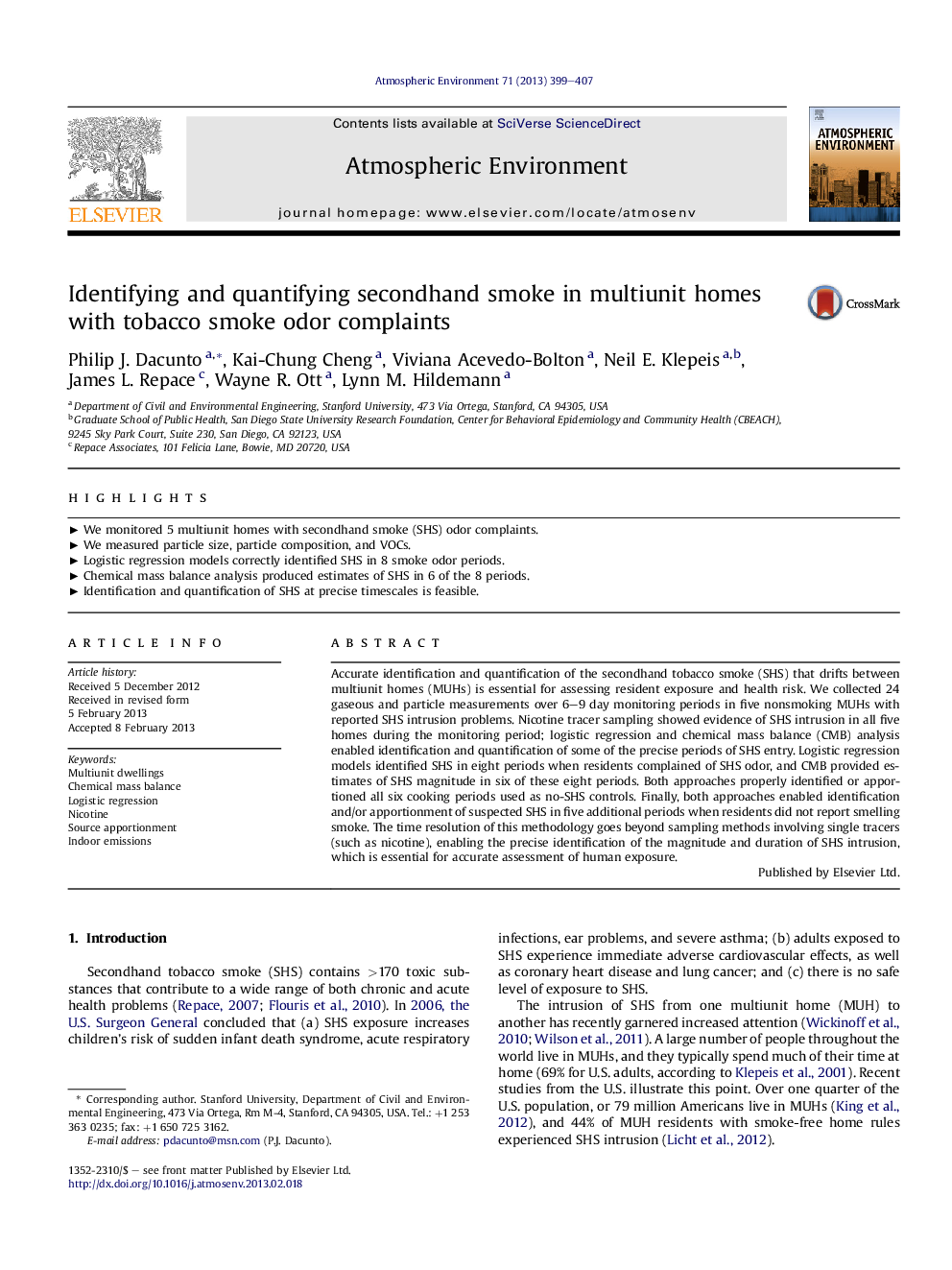| Article ID | Journal | Published Year | Pages | File Type |
|---|---|---|---|---|
| 4438312 | Atmospheric Environment | 2013 | 9 Pages |
Accurate identification and quantification of the secondhand tobacco smoke (SHS) that drifts between multiunit homes (MUHs) is essential for assessing resident exposure and health risk. We collected 24 gaseous and particle measurements over 6–9 day monitoring periods in five nonsmoking MUHs with reported SHS intrusion problems. Nicotine tracer sampling showed evidence of SHS intrusion in all five homes during the monitoring period; logistic regression and chemical mass balance (CMB) analysis enabled identification and quantification of some of the precise periods of SHS entry. Logistic regression models identified SHS in eight periods when residents complained of SHS odor, and CMB provided estimates of SHS magnitude in six of these eight periods. Both approaches properly identified or apportioned all six cooking periods used as no-SHS controls. Finally, both approaches enabled identification and/or apportionment of suspected SHS in five additional periods when residents did not report smelling smoke. The time resolution of this methodology goes beyond sampling methods involving single tracers (such as nicotine), enabling the precise identification of the magnitude and duration of SHS intrusion, which is essential for accurate assessment of human exposure.
► We monitored 5 multiunit homes with secondhand smoke (SHS) odor complaints. ► We measured particle size, particle composition, and VOCs. ► Logistic regression models correctly identified SHS in 8 smoke odor periods. ► Chemical mass balance analysis produced estimates of SHS in 6 of the 8 periods. ► Identification and quantification of SHS at precise timescales is feasible.
